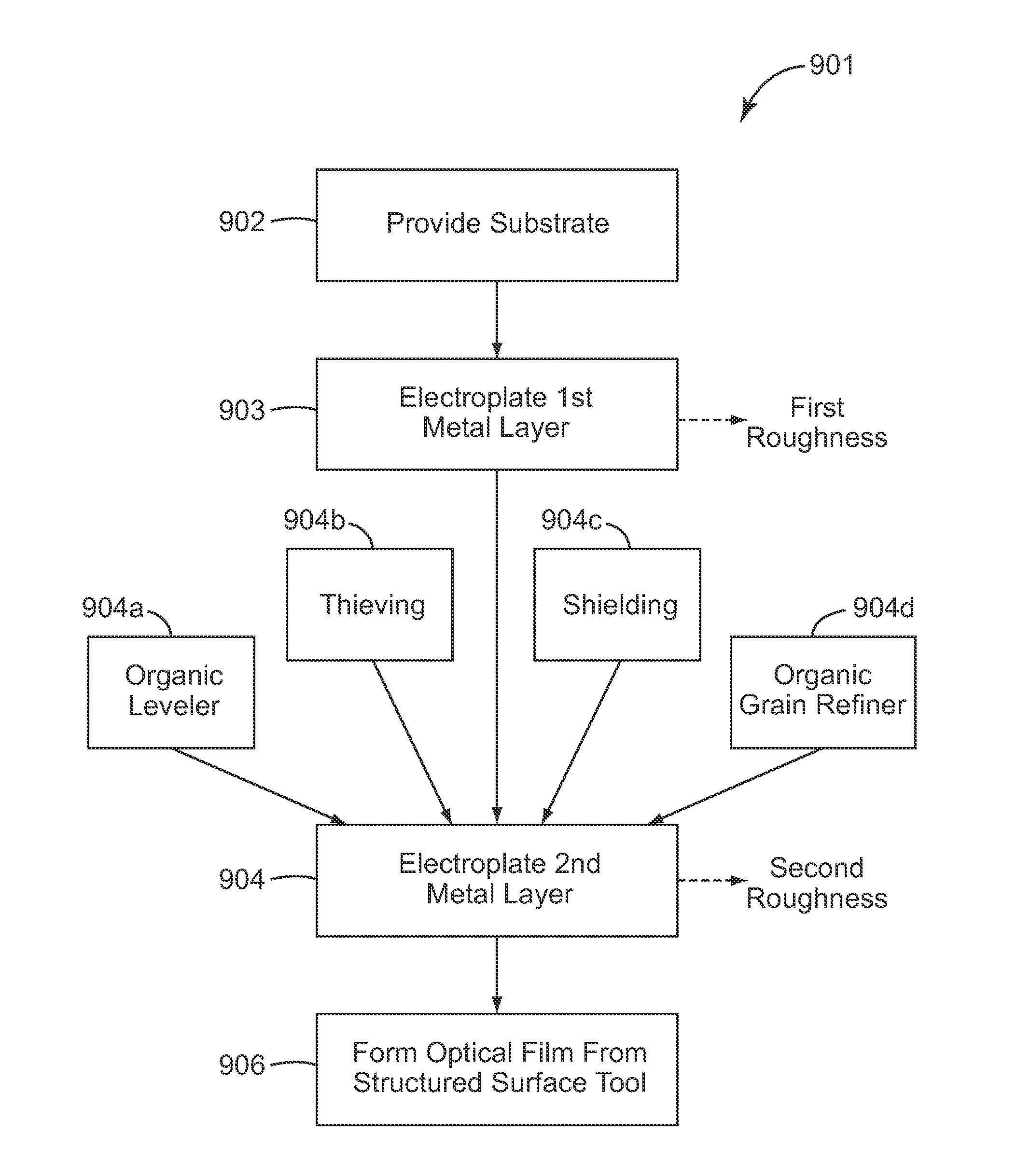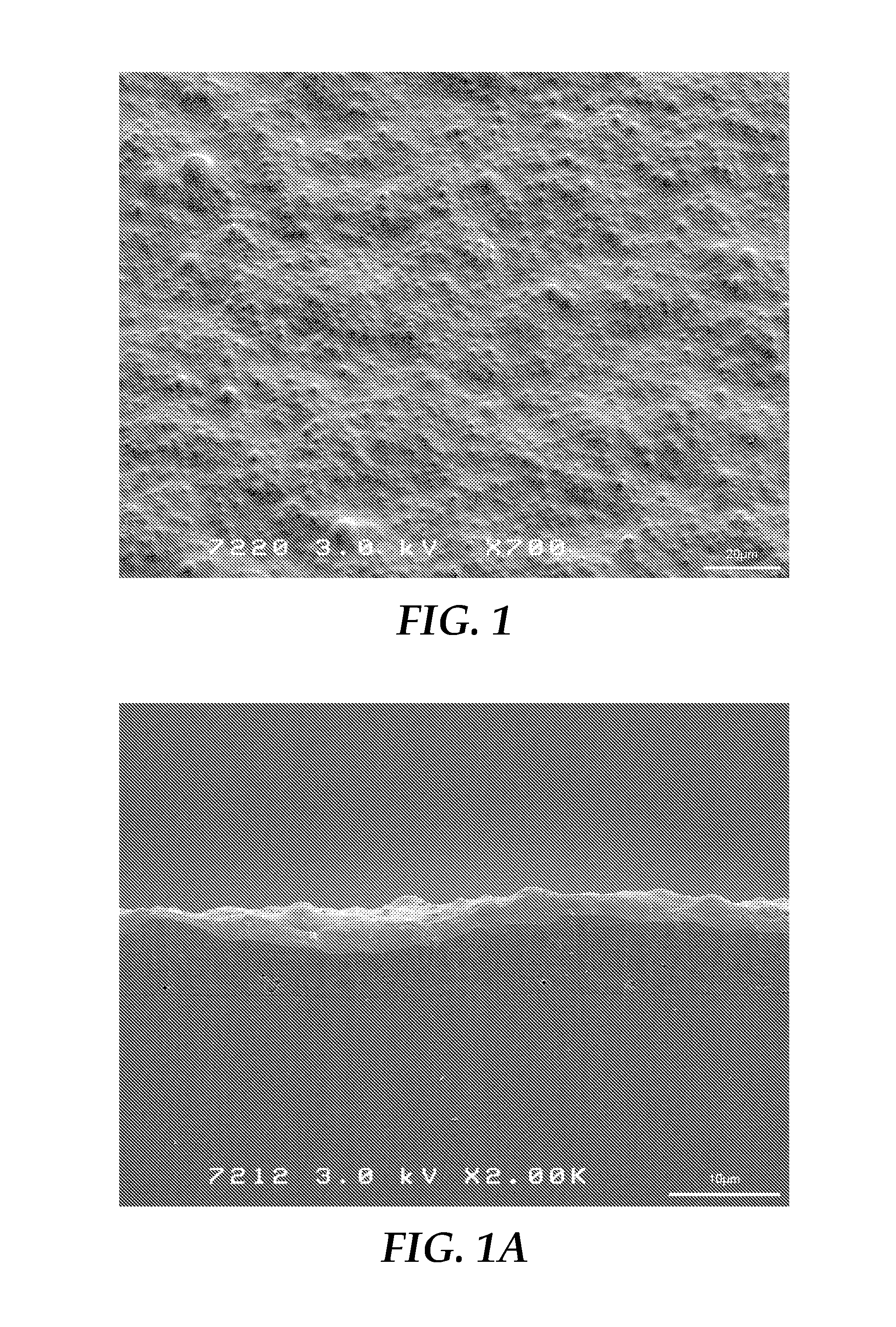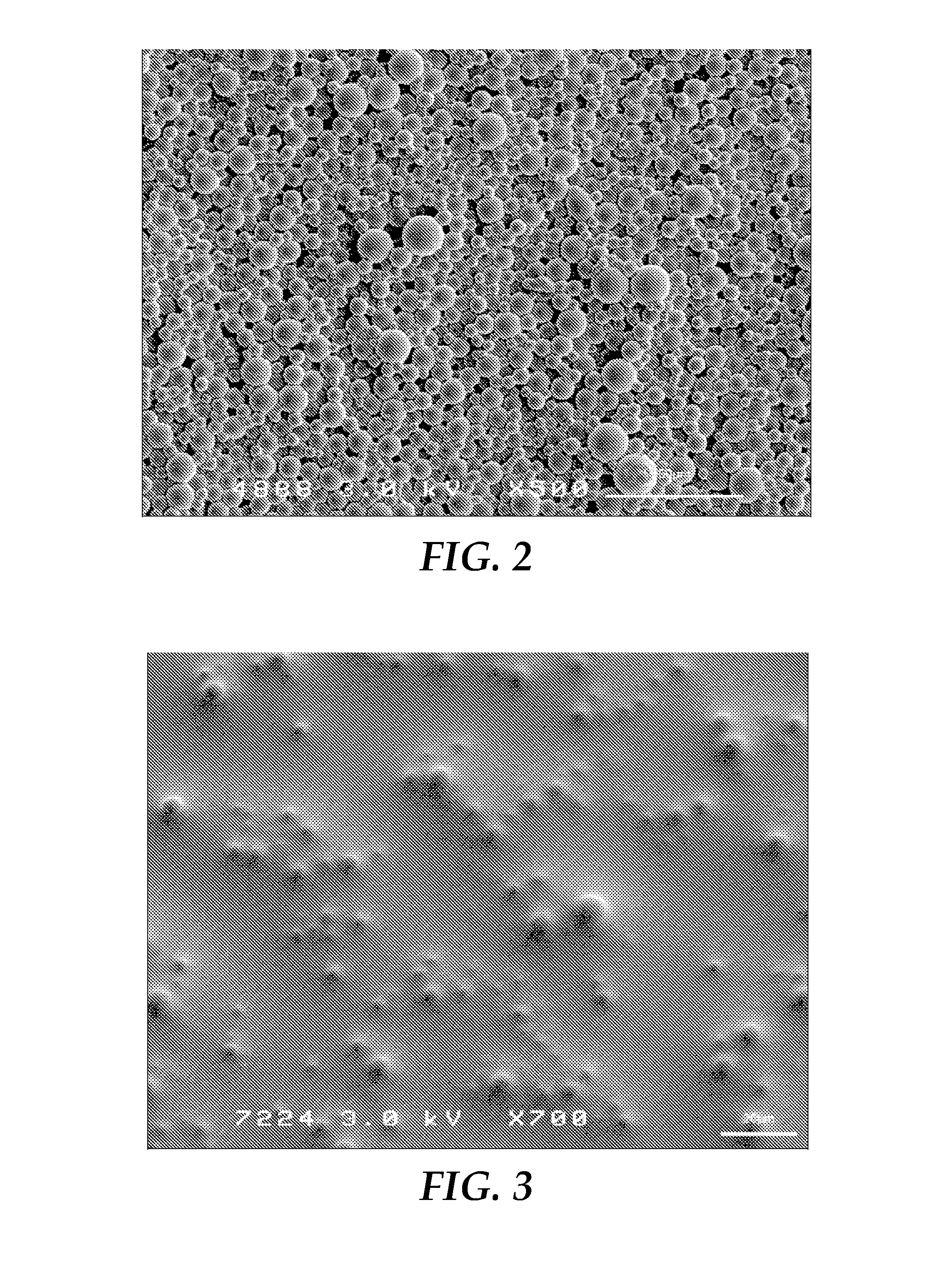Optical diffusing films and methods of making same
a technology of optical diffusing films and optical film, applied in the field of optical film, can solve the problems of unwanted abrasion in the system, bead films are also susceptible to crossweb, lot-to-lot variability, and add to the cost of manufacture, and achieve the effect of reducing the average roughness and topography, and high average roughness
- Summary
- Abstract
- Description
- Claims
- Application Information
AI Technical Summary
Benefits of technology
Problems solved by technology
Method used
Image
Examples
examples
[0110]A number of optical diffusing film samples were made according to methods as shown in FIG. 9. Thus, in each case, a structured surface tool was made under a set of process conditions, and then the structured surface of the tool was microreplicated to form a corresponding structured surface (in inverted form) as a major surface of the optical film. (The opposed major surface of each optical film was flat and smooth.) The structured surface provided each optical film with a given amount of optical haze and optical clarity. The haze and clarity of each optical diffusing film sample was measured with the Haze-Gard Plus haze meter from BYK-Gardiner. The following table sets forth some of the chemical solutions that were used during the fabrication of various samples, as explained further below:
TABLE 1Some Solutions UsedElementComponentSupplierQuantityAlkaline cleaner25% Sodium hydroxideHawkins Chemical30% v / v(NaOH)(Minneapolis, MN)16% Sodium carbonateHawkins Chemical3.5% v / vTriton ...
PUM
| Property | Measurement | Unit |
|---|---|---|
| aspect ratio | aaaaa | aaaaa |
| optical haze | aaaaa | aaaaa |
| optical haze | aaaaa | aaaaa |
Abstract
Description
Claims
Application Information
 Login to View More
Login to View More - R&D
- Intellectual Property
- Life Sciences
- Materials
- Tech Scout
- Unparalleled Data Quality
- Higher Quality Content
- 60% Fewer Hallucinations
Browse by: Latest US Patents, China's latest patents, Technical Efficacy Thesaurus, Application Domain, Technology Topic, Popular Technical Reports.
© 2025 PatSnap. All rights reserved.Legal|Privacy policy|Modern Slavery Act Transparency Statement|Sitemap|About US| Contact US: help@patsnap.com



